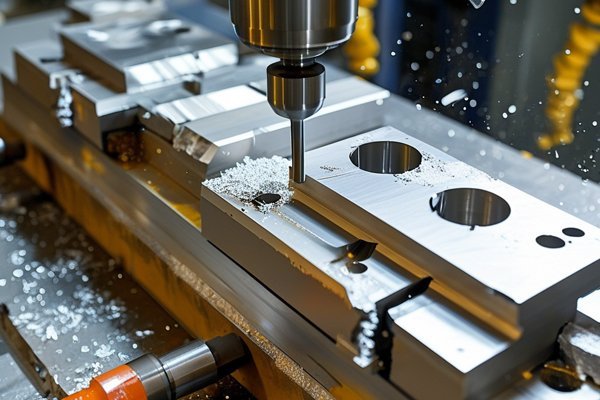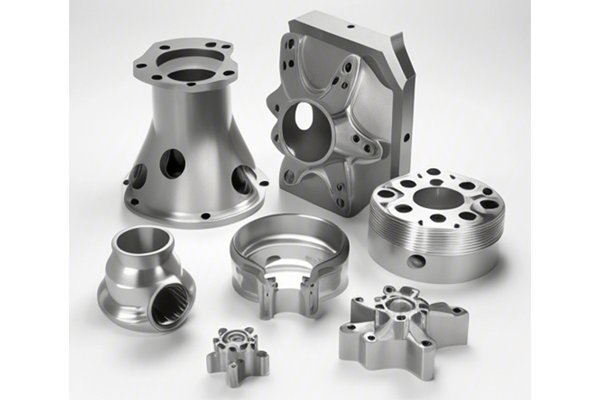Did you know that the surface finish of a machined part can account for over 90% of its perceived quality? In industries where precision is paramount—such as aerospace, automotive, and medical instrumentation—the surface finish of components can significantly impact their functionality and longevity. This is particularly true for brass components, known for their excellent machinability and corrosion resistance. In this blog, we will delve into how CNC (Computer Numerical Control) machining technology plays a crucial role in evaluating the surface finish quality of brass parts.
to CNC Machining
CNC machining is a subtractive manufacturing process that utilizes computer-controlled systems to remove material from a solid block to create precise parts. This technology has revolutionized manufacturing by offering high precision, repeatability, and efficiency, making it a preferred choice in producing complex geometries.
CNC machining is not only limited to metals; it encompasses a wide range of materials, including plastics and composites. However, when it comes to evaluating surface finishes, brass holds a critical position due to its unique properties, including excellent machinability and a visually appealing finish.
Understanding Surface Finish Quality
What is Surface Finish?
Surface finish refers to the texture and smoothness of a manufactured surface. It is characterized by various parameters, including:
Importance of Surface Finish in Brass Components
A well-defined surface finish plays a vital role in the operational efficiency of brass components:
Evaluating Surface Finish Quality with CNC Machining
CNC Machining Process for Brass Components
Techniques for Evaluating Surface Finish

Parameters Measured
Case Studies: CNC Machining and Surface Finish Evaluation in Brass Manufacturing
Case Study 1: Aerospace Component Fabrication
In the aerospace industry, precision is critical, and manufacturers must adhere to stringent surface finish requirements. Using CNC technology, one company was able to achieve surface finishes below Ra 0.8 for brass components used in fuel systems. By optimizing toolpath strategies and incorporating multiple finishing operations, the company significantly reduced the lead time while maintaining strict quality controls.
Case Study 2: Decorative Brass Fittings
A manufacturer of decorative components faced issues with oxidized surfaces due to improper finishing techniques. By integrating CNC machining with an automated inspection system, they were able to evaluate surface finish in real time. The result was a reduction in defects and an increase in customer satisfaction due to the enhanced aesthetic quality of the brass fittings.
Common Challenges in Evaluating Surface Finish Quality
Solutions to Common Challenges
Innovations in CNC Technology for Surface Finish Evaluation
Smart CNC Machining
The advent of Industry 4.0 means smarter CNC machines equipped with IoT capabilities. These machines can collect data in real-time during machining operations, allowing for immediate adjustments to maintain surface quality during production.
Machine Learning Algorithms
Machine learning can play a significant role in predicting the surface quality based on input parameters. By analyzing historical data from CNC machines, manufacturers can fine-tune their processes and enhance their quality output.
Evaluating the surface finish quality of brass components is integral to ensuring that manufactured parts meet industry standards and customer expectations. CNC machining technology provides an indispensable framework for this evaluation, combining precision, automation, and advanced measurement techniques.
Ultimately, understanding the intricacies of surface finish in CNC machining extends beyond mere aesthetics. It impacts the functional performance, longevity, and reliability of components across various sectors, from aviation to consumer products.
By utilizing the latest advancements in CNC technology and adopting best practices for surface finish evaluation, manufacturers can enhance their quality control processes, thus leading to improved customer satisfaction and a competitive edge in the market.
In closing, as the pursuit for higher quality continues, exploring how CNC machining plays a role in evaluating surface finishes is essential for any stakeholder in the manufacturing industry. Understanding these dynamics not only ensures compliance with quality standards but also fosters innovation and efficiency in production processes. Keep these insights in mind as they are crucial to achieving excellence in the complex world of brass component manufacturing.






